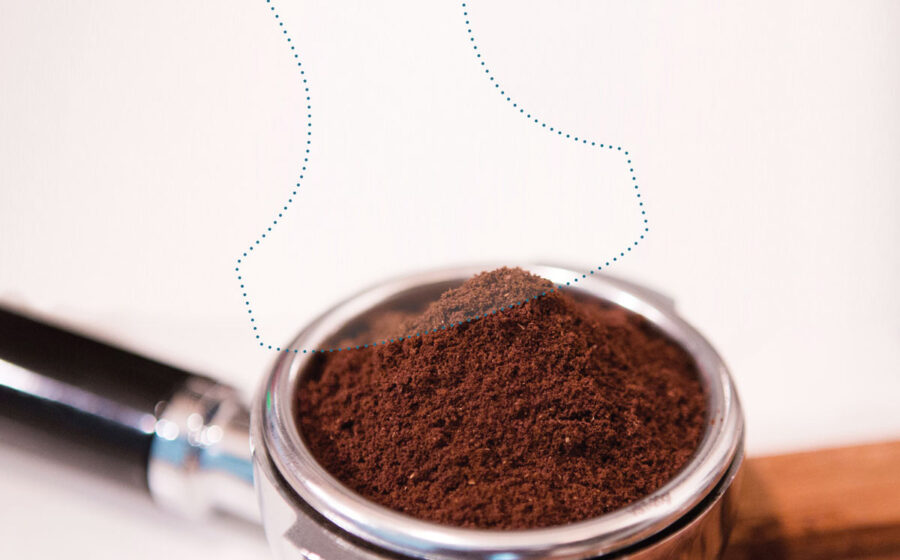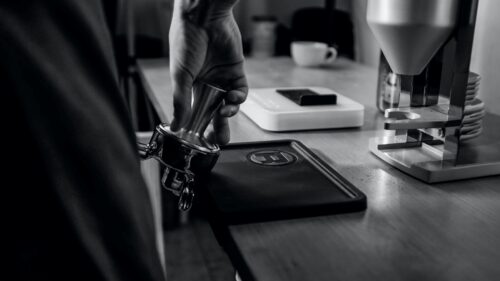For most baristas, tamping is as essential to espresso making as dialing in and grinding the beans. What would happen, then, if the baristas of the world suddenly didn’t have to tamp?
That’s the question some coffee professionals are beginning to ask themselves. As machine innovations, brewing technology, and even basic extraction theory grow, develop, and spread across the industry, the question of whether tamping even matters looms large.
Should I Stay Or Should I Go?
Andrew Tucker-MacLeod, a West Coast trainer and educator for Dancing Goats Coffee (formerly Batdorf & Bronson Coffee Roasters), is one barista who’s open to challenging the way we think about tamping—or the way we think about not tamping.
In a recent phone interview, Andrew described how he first started to reconsider the tamp while using a new model espresso machine from Nuova Simonelli called the Aurelia T-3: “I was trying to find a setting on my Aurelia T-3, reading the manual, and it said that the way the soft-infusion is set up on their groups, tamping is less of a factor—so that if you end up tamping incorrectly, the pre-infusion sort of works it out.”
Dosing and distributing espresso are increasingly controlled by advanced grinder technology, scales, and leveling tools. But tamping remains one of the personal and physical connections a coffee maker has to coffee. Aside from that, it’s long been considered functional as part of a barista’s technique.
Tamping compresses ground coffee to offer resistance to the espresso machine’s highly pressurized water from the group head. It also creates a bit of space for the coffee grounds to swell, as they inevitably will when they start absorbing the brewing water.
Is it truly necessary, though?
Tucker-MacLeod didn’t necessarily believe what he read in the manual at first. He did a few tests—and was surprised at what he found. “It’s odd,” he says of an experiment where he didn’t tamp. “You’d expect to pull a shot on the shot and have water gush through the shot. But I got a twenty-five to twenty-eight-second espresso shot without any of the pits or blast-throughs you’d expect.” As the manual says, it seems as if the machine’s soft infusion technique, which Majesty Coffee describes as being able to ensure that “every nuance of the coffee is represented in the espresso…[by] settling the coffee in the group head,” corrects for tamping errors—and makes tamping overall less critical.
He adds one caveat, however: “The dose size has to be right around the nineteen-gram or twenty-gram dose, though—you can’t overfill the basket. That’s the key.”
Never Gonna Give You Up
According to Nuova Simonelli, “tamping pressure is less relevant to a consistent espresso extraction than previously thought,” thanks to the innovative soft pre-infusion feature in its T-3 models. This allows the swelling of the coffee bed itself to create an even cake of grounds and prevent channeling.
But not everyone agrees with the suggestion to throw the tampers out with the spent puck—just ask a tamper manufacturer!
Reg Barber, arguably the man who created the market for handcrafted espresso tampers with his eponymous tamper manufacturing company, insists tamping will remain alive and well. “Baristas’ style and force have a tremendous impact on espresso extraction,” he says via e-mail. “If a barista is pressing with a great deal of force or has a specific ‘style,’ this will impact extraction as much as the coffee they’re using.”
Intrigued, I did side-by-side tests using a La Marzocco Linea PB. I dialed in a coffee using a recipe of twenty grams of dry grounds and a final shot weight of about thirty-seven grams with a roughly twenty-five-second brew time. After making several nice espresso shots using standard tamping pressure (usually between 30-50 pounds), I prepared several shots following all the same parameters, minus the tamp.
While the extraction time was within a practically identical range, the shots were noticeably inferior in taste and mouthfeel. While the tamped espresso was sweet with punchy acidity and a persistent crema, the non-tamped espresso was woody, with a bitter finish and crema that dissipated almost instantly. After extraction, I inspected the spent pucks. They showed far more instances of channeling (holes where water can move through faster) in the untamped coffee, with apparent cracks between the grounds’ cake and the portafilter walls.
Unscientific as it is, running a test with your machine is probably the most accessible way for the average barista to make an informed decision about tamping, pro or con. Will the results rewrite the way we make espresso? Probably not. There is a strong physical and emotional appeal in the action and development of a unique tamping “style”—and espresso without style is, well, just a boring old cup of coffee.
This story was originally published on February 17, 2015, and has been updated to meet Fresh Cup’s current editorial standards.

















